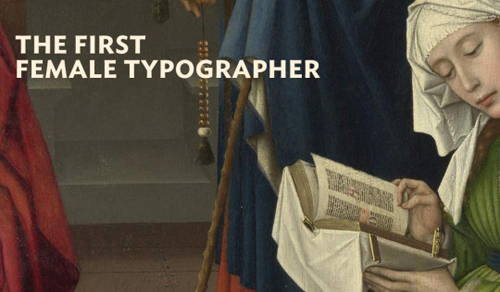In the fifteenth century women had few career opportunities. Perhaps Victorian romanticism is responsible for painting a fantastic or rather idealized picture of women during the Middle Ages: Maidens in pretty gowns, prince suitors — something more akin to Disney than historical fact.
Prior to the introduction of printing in the mid-fifteenth century women were involved in the production of manuscripts. The history of nuns working as scribes can be traced back to the early days of the Church.
It was not uncommon for the wife of a craftsman to work alongside her husband. The atelier and the living quarters of the fifteenth-century print-shop merged into one, so that, even if the wife were not directly working at printing. For most of history, “Anonymous” was a woman.
The very first woman to ever add her name to the colophon of a printed book as its printer is Anna Rügerin, who published two folio editions in the summer of 1484 in the imperial city of Augsburg in southern Germany. Upon the death of her husband, it appears that Anna took full control of the print shop.
Though there are few records of the very earliest female printers and typographers, in the present-day, women bookmakers, editors, printers, type designers, and typographers are, in some respects, heirs to the likes of Anna Rügerin and many other anonymous women who, to this day, continue to enlighten and inspire.


No comments:
Post a Comment